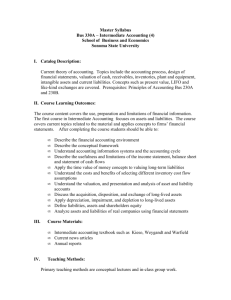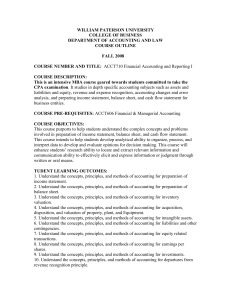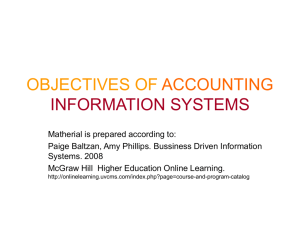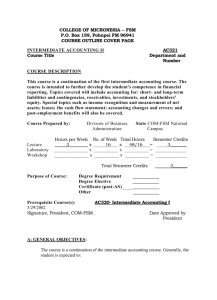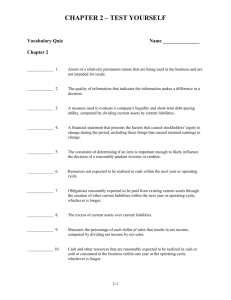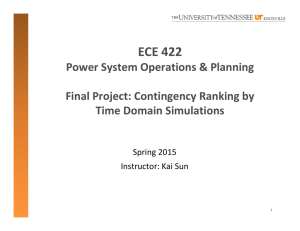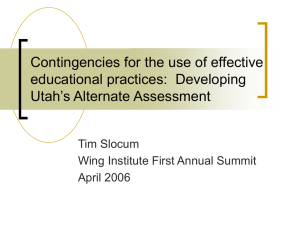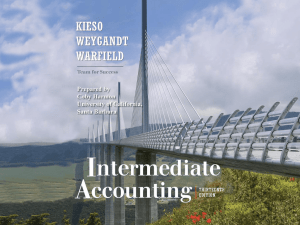Course Outline
advertisement
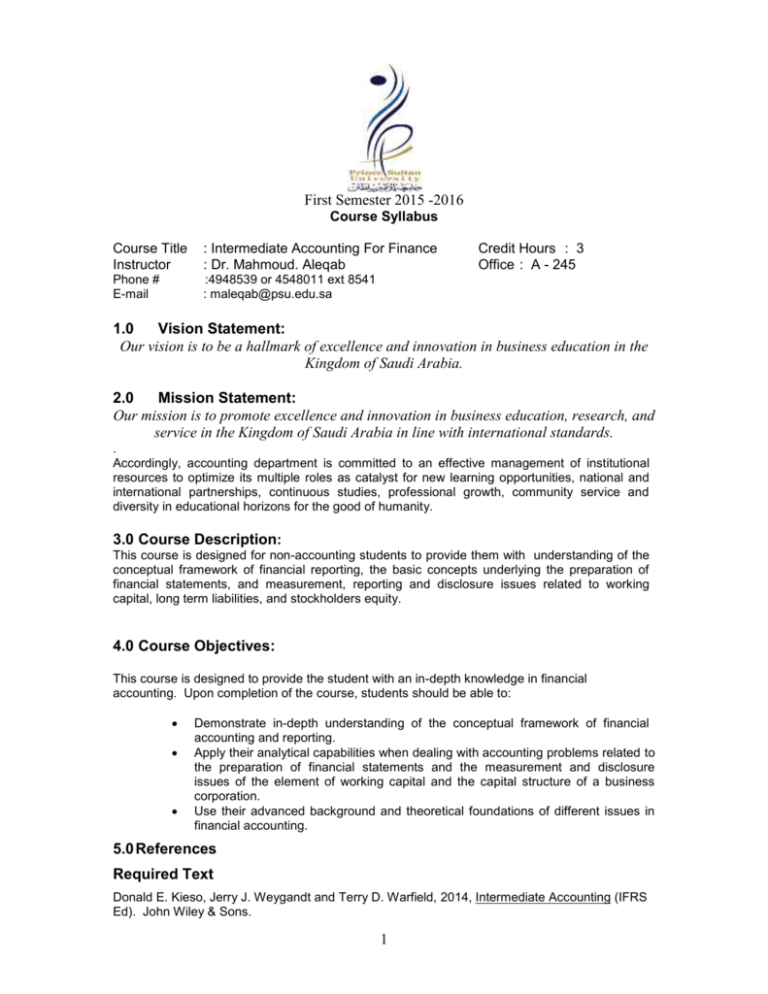
First Semester 2015 -2016 Course Syllabus Course Title Instructor : Intermediate Accounting For Finance : Dr. Mahmoud. Aleqab Phone # E-mail :4948539 or 4548011 ext 8541 : maleqab@psu.edu.sa Credit Hours : 3 Office : A - 245 1.0 Vision Statement: Our vision is to be a hallmark of excellence and innovation in business education in the Kingdom of Saudi Arabia. 2.0 Mission Statement: Our mission is to promote excellence and innovation in business education, research, and service in the Kingdom of Saudi Arabia in line with international standards. . Accordingly, accounting department is committed to an effective management of institutional resources to optimize its multiple roles as catalyst for new learning opportunities, national and international partnerships, continuous studies, professional growth, community service and diversity in educational horizons for the good of humanity. 3.0 Course Description: This course is designed for non-accounting students to provide them with understanding of the conceptual framework of financial reporting, the basic concepts underlying the preparation of financial statements, and measurement, reporting and disclosure issues related to working capital, long term liabilities, and stockholders equity. 4.0 Course Objectives: This course is designed to provide the student with an in-depth knowledge in financial accounting. Upon completion of the course, students should be able to: Demonstrate in-depth understanding of the conceptual framework of financial accounting and reporting. Apply their analytical capabilities when dealing with accounting problems related to the preparation of financial statements and the measurement and disclosure issues of the element of working capital and the capital structure of a business corporation. Use their advanced background and theoretical foundations of different issues in financial accounting. 5.0 References Required Text Donald E. Kieso, Jerry J. Weygandt and Terry D. Warfield, 2014, Intermediate Accounting (IFRS Ed). John Wiley & Sons. 1 III. No 1 2 3 4 5 6 7 8 9 Course Contents Topics Cash and receivables (Chapter 7) Management and control of cash, cash-related items Recognition and valuation of accounts receivables Disposition of accounts receivable Inventories (Chapter 8) Inventory classification and control Treatments of goods in transit, goods under consignment and special sales agreements Costs included in inventory Cost flow assumption (FIFO and average methods) Current liabilities and contingencies (Chapter 13) Nature, type and valuation of current liabilities Gain contingencies, loss contingencies Presentation and analysis of current liabilities and contingencies Long term liabilities (Chapter 14) Valuation of bonds payable, costs of issuing bonds Accounting for extinguishment of debt Reporting and analysis of long term debt including off balance sheet financing Stockholders’ equity (Chapter 15) Common and preferred stock Issuance of stock, reacquisition of shares, treasury stock Dividends distribution and types of dividends, stock split - Presentation and analysis of stockholders’ equity Financial accounting and accounting standards Financial statements and financial reporting Parties involved in standard setting Generally accepted accounting principles (GAAPs) Issues in financial reporting Conceptual framework underlying financial accounting The need for a conceptual framework Development of a conceptual framework with three levels: Level 1: Basic objectives of financial reporting Level 2: Qualitative characteristics of accounting information and elements of financial statements Level 3: Recognition and measurement concepts Income statement and related information (Chapter 4) Usefulness and limitation of income statement, earnings quality Format of income statement Reporting of irregular items Special reporting issues including EPS and comprehensive income Hours 6 6 6 6 6 4 6 6 Balance sheet Usefulness and limitation of the balance sheet Classification in the balance sheet - Additional information reported in the balance sheet including contingencies, contractual situations and fair values 6 10 Statement of cash flows (Chapter 23) Usefulness, classification and format Preparation of statement of cash flows using both direct and indirect methods 2 8 6.0 Teaching and Learning Strategies Lectures and class discussions will be the main mode of teaching. Students are expected to complete an individual assignment based on specific course requirements besides handing in other required assignments by the instructor. Active class participations are highly encouraged. The following four principles are essential components of each student’s success in this course: • Participation: Effective learning takes place primarily through active class participation. Students are strongly encouraged and are responsible for sharing their understanding and views on each topic with the rest of the class. • Preparation: To effectively participate in class discussion, students must come to class well prepared. Students should study each assigned topic in advance. • Presence: The only way to learn and succeed in this course is to be present and participate in each and every class. Reading a text or copying notes from your fellow students cannot substitute for the insight and knowledge that you will acquire through participation in class discussions. • Promptness: Students must make sure that they arrive before the beginning of each class. Students who arrive to class late disrupt the discussion and impose a burden on their fellow students’ learning experience. It is clear from the above that students must be committed to prepare for each class and actively participate in class discussions. Students must also be prepared to be called upon to answer questions or offer their views on the topic under discussion. It is strongly encouraged that you take a stand and offer your recommendation based upon your reasons. 7.0 Reading Instructions You should read the chapter(s) assigned prior to the lecture. Further, you should be prepared to participate in class discussions of the material being presented. Homework and assignments will be assigned from time-to-time. Sometimes they maybe collected or not collected. It is the responsibility of the student to be prepared at all times and ready to present his findings to the class and to be engaged in our classroom discussion. 8.0 Student Assessment Participation,Assignments, Quizzes, and attendance 30% Midterm exam 30% Final Exam (comprehensive) 40% TOTAL 100% 3
